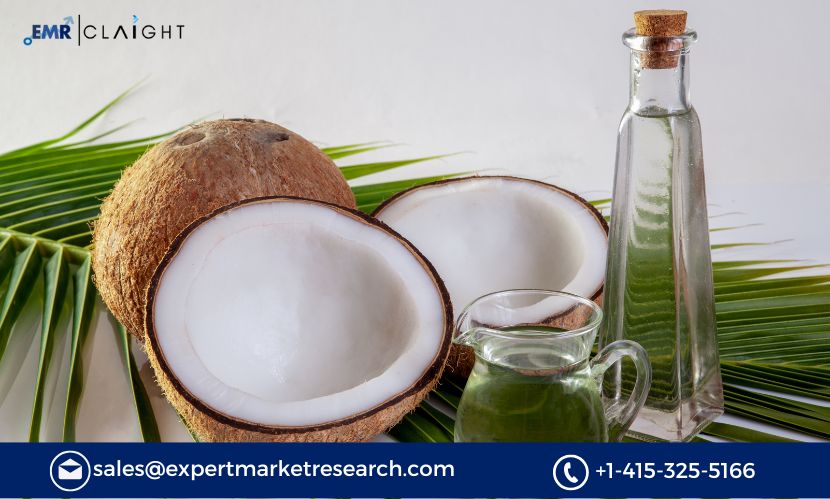Introduction
A Coconut Oil Manufacturing Plant Project Report is a comprehensive document that outlines all the essential aspects of establishing a coconut oil production facility. Coconut oil, derived from the meat of mature coconuts, is widely used in the food, cosmetics, and pharmaceutical industries. Due to its versatility and increasing demand globally, especially for its health benefits, setting up a coconut oil manufacturing plant can be a profitable venture. This project report provides an in-depth analysis of the various components needed to set up the plant, from market research and raw material procurement to production, technology, and financial projections.
In this article, we will explore the key components of a Coconut Oil Manufacturing Plant Project Report, covering everything you need to know to successfully plan and execute the establishment of a coconut oil production facility.
Understanding Coconut Oil
Coconut oil is a highly versatile and valuable product derived from the kernel or meat of mature coconuts. It is widely used in culinary applications due to its flavor, as well as in cosmetic formulations for its moisturizing and healing properties. Coconut oil is classified into two main types:
- Virgin Coconut Oil: Extracted from fresh coconut meat using cold-pressing or centrifugal methods, this oil is unrefined and retains more nutrients and antioxidants.
- Refined Coconut Oil: Made by refining copra (dried coconut meat), this oil undergoes processing to remove impurities, odors, and other substances.
Coconut oil’s growing demand in food, skincare, and wellness markets, along with its health benefits, makes it a highly profitable product to manufacture.
Key Components of a Coconut Oil Manufacturing Plant Project Report
The Coconut Oil Manufacturing Plant Project Report provides a thorough analysis of the various components involved in setting up a coconut oil manufacturing plant. These components include market analysis, raw material procurement, technology and machinery, production processes, cost estimates, and more.
1. Executive Summary
The executive summary offers an overview of the project, including key details such as the plant’s objectives, production capacity, and expected financial returns. It provides a concise snapshot of the entire project to investors and stakeholders, highlighting the potential profitability and the growing demand for coconut oil.
Get a Free Sample Report with Table of Contents@
2. Market Analysis
Market analysis is a crucial section of the project report as it helps identify the target market and the demand for coconut oil. The market for coconut oil has been expanding rapidly, driven by increasing consumer awareness of its health benefits and its use in both food and personal care products.
This section should include:
- Demand for Coconut Oil: A review of global and regional demand for coconut oil, including trends in health-conscious food consumption and the rising popularity of organic and natural beauty products.
- Industry Growth: Insights into the expected growth of the coconut oil industry, both in terms of production and consumption.
- Competitor Analysis: A look at the major players in the coconut oil market and their market shares, helping to gauge the competitive landscape.
The market analysis should also focus on pricing strategies, target consumers (e.g., food manufacturers, cosmetic companies, and health-conscious individuals), and potential sales channels (e.g., retail, e-commerce, or direct supply to industries).
3. Location and Site Analysis
Choosing the right location for the manufacturing plant is essential for ensuring operational efficiency. The location should be selected based on several factors:
- Proximity to Raw Materials: The plant should ideally be located near coconut-producing regions, minimizing transportation costs and ensuring a steady supply of coconuts.
- Infrastructure: The availability of water, electricity, and road or rail networks for efficient raw material supply and product distribution.
- Labor Availability: Access to skilled and unskilled labor required to operate the plant.
- Regulatory Compliance: The location must comply with local zoning laws, environmental regulations, and industry-specific guidelines.
4. Raw Material Supply and Procurement
The main raw material for producing coconut oil is mature coconuts, which must be sourced in bulk from coconut plantations or suppliers. In this section, the report should outline the following:
- Sourcing of Coconuts: Identifying reliable suppliers or establishing direct relationships with coconut farmers.
- Logistics and Transportation: Arrangements for transporting coconuts to the manufacturing facility, considering factors such as transportation costs, storage, and handling.
- Quality Control: Ensuring the coconuts meet the required quality standards for oil production.
It’s essential to consider whether the plant will use fresh coconuts (for virgin coconut oil) or dried coconuts (for refined coconut oil), as the sourcing requirements may differ.
5. Production Process
The production process involves several key stages, from raw material preparation to oil extraction and packaging. The manufacturing process for coconut oil typically involves the following steps:
-
Coconut Preparation: The first step involves removing the husk and shell from the coconuts to obtain the meat (kernel).
-
Oil Extraction: There are two primary methods for extracting coconut oil:
- Cold-Pressing (for Virgin Coconut Oil): This method involves pressing the fresh coconut meat without heat, ensuring that the oil retains its nutrients and antioxidants.
- Expeller-Pressing (for Refined Coconut Oil): This method involves mechanical pressing of dried coconut meat (copra) to extract the oil.
-
Purification: The extracted oil is then purified by removing impurities such as moisture, free fatty acids, and odor. This can be done through filtration, degumming, and refining processes.
-
Packaging: The final product is packaged in various forms, including bottles, jars, or bulk containers, depending on customer requirements.
The project report should detail each stage of the production process, the technology and machinery involved, and the timeline for each process.
6. Technology and Equipment
The selection of appropriate technology and equipment is crucial for the efficient and cost-effective production of coconut oil. The machinery and technology required for the production process include:
- Coconut Grating Machines: For grating the coconut meat.
- Oil Extractors: Cold-press or expeller-press machines for oil extraction.
- Filtration and Refining Equipment: To purify and refine the extracted oil.
- Packaging Machines: For packaging the coconut oil in various forms.
This section should also evaluate whether the plant will use manual or automated processes and the cost implications of each option.
7. Cost Analysis
The cost analysis section is critical for assessing the financial feasibility of the coconut oil manufacturing plant. It should include:
- Capital Investment: Initial costs for setting up the plant, including land acquisition, building construction, equipment, and technology.
- Operational Costs: Ongoing expenses such as raw material procurement, labor, utilities (electricity, water), maintenance, and packaging.
- Break-even Analysis: The point at which the plant will start making a profit, factoring in fixed and variable costs.
- Cost of Production: The cost to produce one unit of coconut oil, including all associated production costs.
The financial projections should be backed by realistic sales forecasts and cost estimates, helping investors assess the profitability of the plant.
8. Regulatory Compliance and Certification
The production and sale of coconut oil are subject to several regulatory standards and certifications. The project report should outline the necessary licenses and permits required to operate the manufacturing plant, including:
- Food Safety and Quality Standards: Compliance with national and international food safety regulations (e.g., FSSAI, FDA).
- Environmental Regulations: Compliance with environmental regulations concerning waste management, water usage, and emissions.
- Certification for Organic Products: If the plant intends to produce organic coconut oil, it must obtain organic certification.
9. Environmental Impact Assessment
The environmental impact of the coconut oil manufacturing process should be carefully assessed. This includes:
- Waste Management: Managing coconut husks, shells, and other by-products generated during production.
- Water Usage: Ensuring the plant uses water efficiently and complies with wastewater disposal regulations.
- Energy Consumption: Implementing energy-efficient processes to minimize electricity consumption.
An environmental impact assessment (EIA) should propose strategies for minimizing the plant’s environmental footprint.
10. Human Resources and Training
A skilled workforce is essential for the smooth operation of the coconut oil manufacturing plant. This section of the report should outline:
- Labor Requirements: The number of employees needed for different functions (production, quality control, administration, etc.).
- Training Programs: Training employees on safety protocols, production processes, and quality control measures.
11. Marketing and Sales Strategy
The marketing and sales strategy should detail how the coconut oil will be marketed to different segments, including:
- Target Market: Identifying the key customer segments, such as food manufacturers, cosmetic companies, and health-conscious consumers.
- Sales Channels: Determining whether to sell through distributors, direct sales to businesses, or retail channels.
- Pricing Strategy: Competitive pricing based on market trends, cost of production, and product quality.
This section should also cover promotional activities such as online marketing, trade shows, and partnerships with retailers.
12. Financial Projections
The financial projections should include:
- Revenue Forecast: Estimated sales based on market demand, production capacity, and pricing.
- Profit and Loss Statement: A detailed breakdown of expected income and expenses.
- Cash Flow Projections: Expected inflow and outflow of cash to ensure the plant’s financial health.
13. Risk Analysis
The risk analysis should evaluate potential risks associated with the project, including fluctuations in raw material prices, regulatory changes, and market competition. It should also propose mitigation strategies to address these risks.



